
Abbotsford is a historic country house in the Scottish Borders, near Galashiels, on the south bank of the River Tweed. Now open to the public, it was built as the residence of historical novelist and poet Sir Walter Scott between 1817 and 1825. It is a Category A Listed Building and the estate is listed in the Inventory of Gardens and Designed Landscapes in Scotland.

Sir Walter Scott, 1st Baronet, was a Scottish historian, novelist, poet, and playwright. Many of his works remain classics of European and Scottish literature, notably the novels Ivanhoe (1819), Rob Roy (1817), Waverley (1814), Old Mortality (1816), The Heart of Mid-Lothian (1818), and The Bride of Lammermoor (1819), along with the narrative poems Marmion (1808) and The Lady of the Lake (1810). He had a major impact on European and American literature.
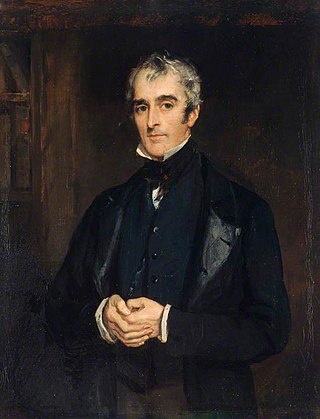
John Gibson Lockhart was a Scottish writer and editor. He is best known as the author of the seminal, and much-admired, seven-volume biography of his father-in-law Sir Walter Scott: Memoirs of the Life of Sir Walter Scott, Bart

The Antiquary (1816), the third of the Waverley novels by Walter Scott, centres on the character of an antiquary: an amateur historian, archaeologist and collector of items of dubious antiquity. He is the eponymous character and for all practical purposes the hero, though the characters of Lovel and Isabella Wardour provide the conventional love interest. The Antiquary was Scott's own favourite of his novels, and is one of his most critically well-regarded works; H. J. C. Grierson, for example, wrote that "Not many, apart from Shakespeare, could write scenes in which truth and poetry, realism and romance, are more wonderfully presented."

David Steuart Erskine, 11th Earl of Buchan, styled Lord Cardross between 1747 and 1767, was a Scottish antiquarian, founder of the Society of Antiquaries of Scotland in 1780 and first vice president, and patron of the arts and sciences.

Saunders Mucklebackit is a character in Walter Scott's 1816 novel The Antiquary, an elderly fisherman and smuggler who is bereaved of his son. Though a comparatively minor character he has often been singled out for praise as one of the novel's most masterly creations.

Edie Ochiltree is a character in Sir Walter Scott's 1816 novel The Antiquary, a licensed beggar of the legally protected class known as Blue-gowns or bedesmen, who follows a regular beat around the fictional Scottish town of Fairport. Scott based his character on Andrew Gemmels, a real beggar he had known in his childhood. Along with Jonathan Oldbuck, the novel's title-character, Ochiltree is widely seen as one of Scott's finest creations.
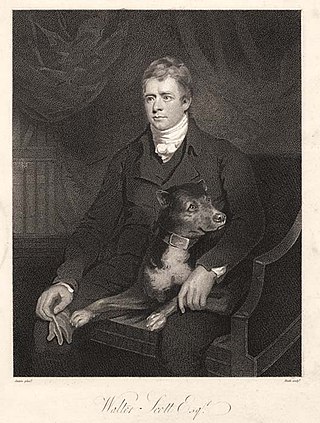
Minstrelsy of the Scottish Border is an anthology of Border ballads, together with some from north-east Scotland and a few modern literary ballads, edited by Walter Scott. It was first published by Archibald Constable in Edinburgh in 1802, but was expanded in several later editions, reaching its final state in 1830, two years before Scott's death. It includes many of the most famous Scottish ballads, such as Sir Patrick Spens, The Young Tamlane, The Twa Corbies, The Douglas Tragedy, Clerk Saunders, Kempion, The Wife of Usher's Well, The Cruel Sister, The Dæmon Lover, and Thomas the Rhymer. Scott enlisted the help of several collaborators, notably John Leyden, and found his ballads both by field research of his own and by consulting the manuscript collections of others. Controversially, in the editing of his texts he preferred literary quality over scholarly rigour, but Minstrelsy of the Scottish Border nevertheless attracted high praise from the first. It was influential both in Britain and on the Continent, and helped to decide the course of Scott's later career as a poet and novelist. In recent years it has been called "the most exciting collection of ballads ever to appear."

Beggars' badges were badges and other identifying insignia worn by beggars beginning in the early fifteenth century in Great Britain and Ireland. They served two purposes; to identify individual beggars, and to allow beggars to move freely from place to place.

Daniel Terry (1780?–1829) was an English actor and playwright, known also as a close associate of Sir Walter Scott.

William, Earl of Glenallan, otherwise Lord Glenallan, is a character in Sir Walter Scott's 1816 novel The Antiquary, a Scottish aristocrat whose life has been ruined by the suicide of his wife and the belief that he has unwittingly committed incest. His story forms the melodramatic Gothic strand in an otherwise largely realistic comic novel.
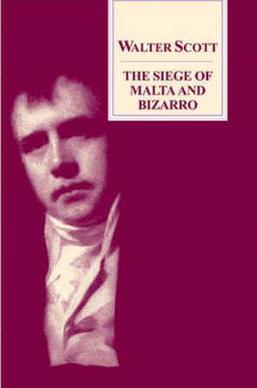
The Siege of Malta is a historical novel by Walter Scott written from 1831 to 1832 and first published posthumously in 2008. It tells the story of events surrounding the Great Siege of Malta by the Ottoman Turks in 1565.

The Hospital of St John the Baptist, at Arbroath, Scotland, was founded in the early 14th century by the monastic community at Arbroath Abbey. The exact date for the foundation is uncertain, but it is first recorded in 1325 during the time that Bernard of Kilwinning (1324–c.1328) was Abbot of Arbroath. The Abbey itself was founded in 1178 by King William the Lion for a group of Tironensian Benedictine monks from Kelso Abbey. It was consecrated in 1197. It is possible that the hospital was used by travellers, as a chantry or possibly almshouse.
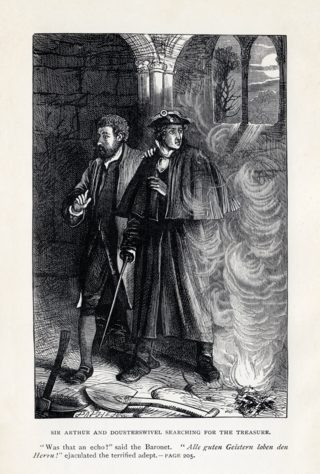
Sir Arthur Wardour of Knockwinnock Castle is a character in Walter Scott’s 1816 novel The Antiquary, a Scottish Tory baronet who is vain of his ancient family but short of money. He is a friend and neighbour of Jonathan Oldbuck, the novel’s title-character.
John Ramsay of Ochtertyre FRSE FSAScot (1736–1814) was a Scottish writer and antiquarian. A renowned letter-writer even in his own lifetime, most of his extensive correspondence has since been lost. His home in Stirlingshire is near Blair Drummond, in the parish of Kincardine-in-Menteith. Sometimes referred to as Oughtertyre or Auchtertyre, it is not to be confused by the larger Ochtertyre estate in Perthshire, owned by the Murray family.

Letters on Demonology and Witchcraft Addressed to J. G. Lockhart, Esq. (1830) was a study of witchcraft and the supernatural by Sir Walter Scott. A lifelong student of folklore, Scott was able to draw on a wide-ranging collection of primary and secondary sources. His book found many readers throughout the 19th century, and exercised a significant influence in promoting the Victorian vogue for Gothic and ghostly fiction. Though on first publication it met with mixed reviews, it is now recognised as a pioneering work of scientific anthropology, treating of its subject in an acute and analytical way which prefigures later scholarship on the subject, as well as presenting a highly readable collection of supernatural anecdotes.
The letters of Sir Walter Scott, the novelist and poet, range in date from September 1788, when he was aged 17, to June 1832, a few weeks before his death. About 7000 letters from Scott are known, and about 6500 letters addressed to him. The major repository of both is the National Library of Scotland. H. J. C. Grierson's The Letters of Sir Walter Scott (1932–1937), though it includes only about 3500, remains the standard edition.
Walter Scott's "Memoirs", first published as "Memoir of the Early Life of Sir Walter Scott, Written by Himself" and also known as the Ashestiel fragment, is a short autobiographical work describing the author's ancestry, parentage, and life up to the age of 22. It is the most important source of information we have on Scott's early life. It was mainly written between 1808 and 1811, then revised and completed in 1826, and first published posthumously in 1837 as Chapter 1 of J. G. Lockhart's multi-volume Memoirs of the Life of Sir Walter Scott, Bart. It was re-edited in 1981 by David Hewitt.
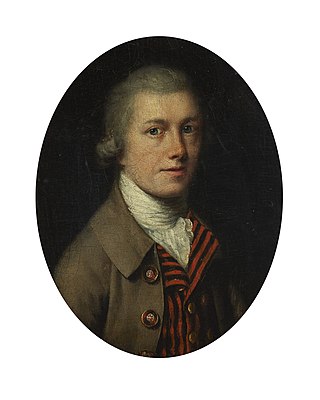
James Sibbald (1745/47–1803) was a Scottish bookseller, publisher, journal editor, and author, active in Edinburgh. The son of a farmer, he started in life as a farm labourer, and later became employed in the shop of Charles Elliot, bookseller. In 1783 he went into the bookselling business on his own. He founded the Edinburgh Magazine and edited the Edinburgh Herald, wrote articles on antiquarian subjects, and published the Chronicle of the Poetry of Scotland (1802).
Joseph Train was a Scottish excise officer, antiquarian, writer and poet. He corresponded with Sir Walter Scott, and his local knowledge provided Scott with ideas for his novels.
















